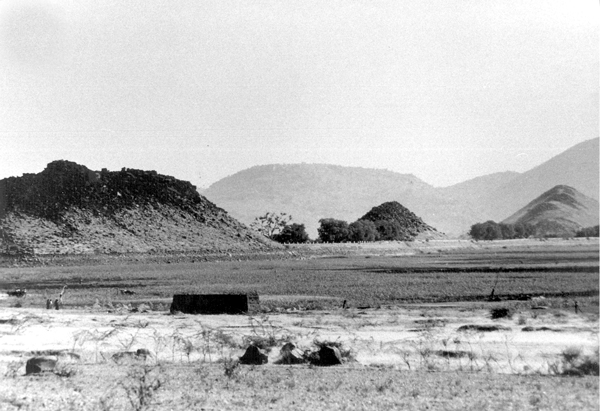The Dharwar Craton and Cuddapah Basin
 The Dharwar Craton is located in southern India. It is composed of c. 3.4-3.0 Ga old tonalite-trondhjemite-granodiorite gneisses and Neoarchean greenstone belts with basaltic volcanics that are intruded by late Neoarchean calc-alkaline and potassic granitoids. The oldest rocks representing the cratonic nucleus occur in the western Dharwar craton (WDC). Near the west coast of India, two NW-trending Paleoproterozoic ductile shear zones demarcate the southern and the northern margins of the WDC, and extend into Madagascar. The southern shear zone separates the WDC from the Mesoarchean granulites of the Coorg Block. A steep mylonitic shear zone along the eastern margin of the Chitradurga schist belt demarcates the eastern boundary of WDC. Based on recent petrologic, geochronologic and isotopic data, the region to the east of the shear zone has been divided into the central and the eastern Dharwar cratonic blocks (CDC and EDC). Charnockites occur at the southern contact of CDC/EDC and the Southern Granulite Terrane.
The Dharwar Craton is located in southern India. It is composed of c. 3.4-3.0 Ga old tonalite-trondhjemite-granodiorite gneisses and Neoarchean greenstone belts with basaltic volcanics that are intruded by late Neoarchean calc-alkaline and potassic granitoids. The oldest rocks representing the cratonic nucleus occur in the western Dharwar craton (WDC). Near the west coast of India, two NW-trending Paleoproterozoic ductile shear zones demarcate the southern and the northern margins of the WDC, and extend into Madagascar. The southern shear zone separates the WDC from the Mesoarchean granulites of the Coorg Block. A steep mylonitic shear zone along the eastern margin of the Chitradurga schist belt demarcates the eastern boundary of WDC. Based on recent petrologic, geochronologic and isotopic data, the region to the east of the shear zone has been divided into the central and the eastern Dharwar cratonic blocks (CDC and EDC). Charnockites occur at the southern contact of CDC/EDC and the Southern Granulite Terrane.
The EDC is separated from the Eastern Ghats belt to the east by the crescent-shaped Cuddapah Basin that contains a sequence of gently east-dipping, Proterozoic sedimentary rocks. Basaltic sills and tuffs (c. 1.86-1.9 Ga) near the base of the sedimentary sequence are exposed parallel to the arcuate southwestern margin of the basin, and the region coincides with an elliptical region of gravity high indicating the presence of a dense lopolithic intrusion in the upper crust.
Eight different Paleoproterozoic mafic dike swarms occur in the CDC and the EDC: the ENE- to NE-trending c. 2.37 Ga old Bangalore-Karimnagar swarm, the N- to NNE-trending c. 2.25 Ga old dikes to the north and south of Cuddapah Basin, the N- to NNW-trending c. 2.22 Ga old dike swarm including the well-known Kandlamadugu dike to the southwest of the basin and the ~400 km long arcuate Nelahalu dike parallel to the western margin of CDC, the subparallel NW- to WNW-trending c. 2.21 Ga old dike swarm including the Somala dike and the c. 2.18 old dike swarm including the Dandeli and Bandepalem dikes, the c. 2.08 Ga old radial dike swarm with the center inside the basin, the ENE-trending c. 1.89-1.88 Ga old dike swarm to the west of the basin, and the NW- to WNW-trending c. 1.79 Ga old dike swarm. Most of these dikes are composed of tholeiitic basalts. The NW-SE and NE-SW oriented dikes surrounding the Cuddapah Basin are doleritic and composed of tholeiites and alkali basalts, and their differentiates.





